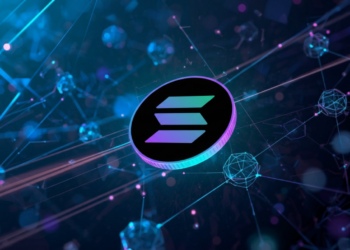Cryptocurrency wallets are an essential tool for managing your digital assets in the decentralized world of cryptocurrencies. Whether you’re holding Bitcoin, Ethereum, or any other altcoin, your wallet allows you to securely store and manage these assets. There are two main types of wallets—custodial and non-custodial. While both serve the same primary purpose, they differ significantly in how they function, who controls your funds, and how secure your assets are.
In this blog, we will explore the key differences between custodial and non-custodial wallets, the advantages and disadvantages of each, and how to choose the right one for your needs.
What is a Custodial Wallet?
A custodial wallet is a type of cryptocurrency wallet where a third party, typically an exchange or financial institution, controls the private keys associated with your wallet. The third-party provider holds the responsibility of safeguarding your funds, meaning they manage the security of your assets and the key to access them. Popular custodial wallets include exchanges like Binance, Coinbase, and Kraken.
How Does a Custodial Wallet Work?
In a custodial wallet, the user doesn’t have direct control over the private keys. When you create an account on a platform offering custodial wallets, you are essentially trusting the platform with your funds. The platform generates and stores the private keys for you, and you access your wallet through the platform’s user interface, which is usually a website or mobile app.
For instance, when you store your Bitcoin in a custodial wallet on an exchange like Coinbase, you don’t technically own the private key to your wallet. Instead, the exchange keeps your private key in their vaults, which means they have the ability to access and manage your funds. This also means that if the exchange suffers a breach or goes down, your funds could be at risk.
Advantages of Custodial Wallets
- Ease of Use: Custodial wallets are extremely easy to use, especially for beginners. You don’t need to worry about managing private keys or dealing with complex technical processes. All you need to do is sign up on the platform, deposit funds, and you’re ready to go.
- Recovery Options: If you forget your password or lose access to your account, most custodial wallet providers offer recovery options such as two-factor authentication (2FA), email confirmations, and identity verification. This makes it easier for users to regain access to their funds.
- Customer Support: Since a third-party provider manages the wallet, you can typically reach out to their customer support team in case of any issues with your funds or access to your wallet. This can be especially beneficial for people who are new to cryptocurrency and need assistance.
- Advanced Features: Custodial wallets often come with advanced features such as staking, lending, and built-in exchange services. These features allow you to earn interest on your crypto or trade it directly from within the platform.
Disadvantages of Custodial Wallets
- Lack of Control: Since the third party holds the private keys, you don’t have full control over your funds. If the platform is hacked or experiences a security breach, your assets could be at risk. Additionally, the platform can block your account or freeze your funds if they suspect fraudulent activity or a violation of their terms.
- Privacy Concerns: Custodial wallets often require personal information such as your name, email, and identification documents to verify your identity. This means that your data is stored by the platform, which could be vulnerable to data breaches. This is a major concern for users who prioritize privacy.
- Dependence on Third Parties: With custodial wallets, you are reliant on the platform to ensure your funds are secure and accessible. If the platform experiences technical issues or goes out of business, you may lose access to your funds.
What is a Non-Custodial Wallet?
In contrast to custodial wallets, non-custodial wallets give the user full control over their private keys and, by extension, their cryptocurrency. This means that the user is solely responsible for managing and securing their own funds. Non-custodial wallets are often referred to as “self-custody wallets” because they allow the user to be their own bank.
There are many types of non-custodial wallets, including software wallets (such as MetaMask, Trust Wallet, and Exodus), hardware wallets (like Ledger and Trezor), and paper wallets.
How Does a Non-Custodial Wallet Work?
With a non-custodial wallet, you, the user, are in charge of your private keys. When you create a wallet, a unique private key (or seed phrase) is generated. This key is crucial for accessing your funds, and it’s up to you to store it safely. The wallet does not store your keys on a central server or rely on a third party to manage your funds. Instead, your keys are kept locally on your device or hardware wallet, ensuring that only you can access your assets.
Whenever you want to send or receive funds, you must sign the transaction with your private key. Since you control the private key, you are the only one who can approve transactions.
Advantages of Non-Custodial Wallets
- Complete Control: Non-custodial wallets give you complete control over your funds. You are the sole person with access to your private key, meaning that no third party can freeze your account or seize your assets. This is especially important for those who believe in the core philosophy of cryptocurrency—decentralization.
- Enhanced Privacy: Non-custodial wallets generally require less personal information compared to custodial wallets. Since you are not relying on a third party, you do not need to provide your name, address, or identification documents, which helps to maintain a higher level of privacy.
- Security: With a non-custodial wallet, your private key is stored locally on your device or hardware wallet, making it more secure from hacks targeting centralized exchanges. As long as you safeguard your private key or recovery phrase, your funds remain secure.
- Freedom: Non-custodial wallets allow you to interact with decentralized finance (DeFi) applications, decentralized exchanges (DEXs), and other blockchain-based services without needing to trust an intermediary. This enables greater financial autonomy.
Disadvantages of Non-Custodial Wallets
- No Recovery Options: If you lose your private key or recovery phrase, there’s no way to recover your funds. Unlike custodial wallets, non-custodial wallets do not offer support services or account recovery mechanisms. If you lose access, your funds are gone forever.
- Responsibility: With great power comes great responsibility. While you have full control over your funds, you are also solely responsible for their security. If you forget your recovery phrase or expose your private key, you could lose access to your assets without any recourse.
- User Experience: For beginners, using non-custodial wallets can be more complex than custodial wallets. Managing private keys and understanding how to interact with decentralized applications (DApps) can be overwhelming for new users. Additionally, transactions can take longer, especially if the wallet requires interaction with the blockchain.
Key Differences Between Custodial and Non-Custodial Wallets
| Feature | Custodial Wallet | Non-Custodial Wallet |
|---|---|---|
| Control of Private Keys | Held by a third party (exchange, platform) | Controlled by the user (self-custody) |
| Security | Dependent on the platform’s security measures | User is responsible for securing the private key |
| Privacy | May require personal information | Generally requires little to no personal information |
| Recovery | Available through platform support | No recovery options, depends on user’s backup |
| Ease of Use | User-friendly, no technical knowledge needed | Requires more technical understanding |
| Features | Often includes advanced features (staking, trading) | Generally focuses on storage and basic transfers |
| Risks | Risk of platform hacks, government interference | Risk of losing access if private key is lost or exposed |
Which Wallet is Right for You?
The choice between a custodial and non-custodial wallet depends on your needs, preferences, and level of experience with cryptocurrencies. Here are some factors to consider:
- Beginners: If you’re new to cryptocurrencies and want a simple, user-friendly experience without worrying about private key management, a custodial wallet may be a good option.
- Privacy and Control: If you value privacy and want full control over your assets, a non-custodial wallet is the better choice. However, make sure you’re comfortable with the responsibility of managing your private keys.
- Long-Term Holding: For long-term holders who don’t plan on frequently trading, a non-custodial wallet is often the safest bet, especially if you’re using a hardware wallet.
- Active Trading: If you’re actively trading or using advanced features like staking, lending, or swapping, a custodial wallet on a platform with those features may be more suitable for your needs.
Conclusion
Both custodial and non-custodial wallets have their merits and drawbacks. Custodial wallets offer ease of use and a safety net in case of issues, but they come with the risk of third-party control. Non-custodial wallets, on the other hand, offer complete control and greater privacy but require careful management of private keys.
Ultimately, the right wallet for you will depend on how you plan to use your cryptocurrency, your level of experience, and your priorities in terms of security and privacy. Choose wisely, and always be mindful of the risks involved in managing your digital assets.
Join Us : Twitter | Website | GitHub | Telegram | Facebook | YouTube























